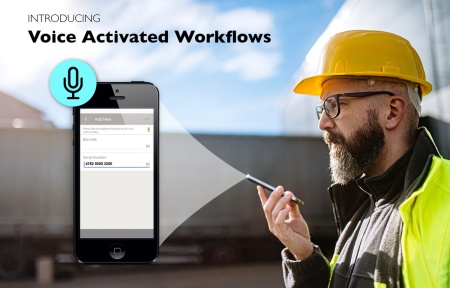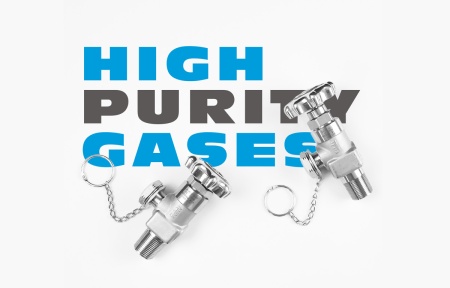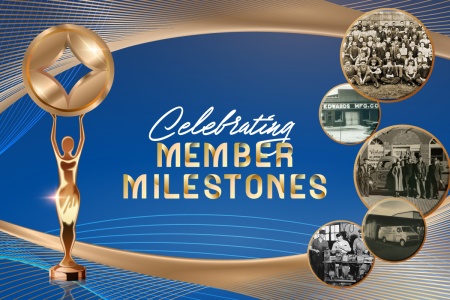There is a school of thought that COVID-19 has not so much created new business trends and norms, as much as accelerated trends that were already coming. One of those trends is the importance of having a comprehensive digital strategy. With state and local governments across the country shutting down businesses and unnecessary travel, it became paramount for customers to be able to find distributors and buy goods and services online. While not universal, a very common theme among companies who were forced to shut their doors for good was that they did not have a strong and strategic plan to serve their existing customers once traditional sales methods were upended.
A Digital Strategy, for all intents and purposes, is using technology to reimagine current processes. It is multi-faceted, with many different avenues available. But what it essentially boils down to is: can your customers find your business and, therefore, your products online? And once they do, is it easy to do business with you?
One GAWDA Member that has had massive success in the digital realm and has been selling goods online since the days of dial-up internet and eBay is Indiana Oxygen.
“The driving force behind our digital strategy is that we want to provide a platform for buyers and potential buyers to interact with our business however they prefer to shop. If that’s in one of our stores, we want to provide a first-class experience. If they prefer to buy online, we want to provide the best online experience possible,” says Justin Yoder, Chief Digital Officer at Indiana Oxygen. “However a customer may want to transact business, we want to provide the platform to do that.”
He adds, “From a digital point of view, we don’t consider ourselves only a gases and welding distributor. We consider ourselves a marketing company that happens to sell gases and welding equipment. We’re consistently working with our IT team and our sales team to ensure that we’re providing assets, materials, and experience that are consistent with our strategy.”
The Importance of Being Online
According to a Digital Commerce 360 Study, e-commerce sales accounted for $602 billion in 2019, a 14.9% increase over 2018. According to a separate study by ShawSpring Research, based off data from Bank of America and the U.S. Department of Commerce, in 2019, e-commerce sales accounted for 16% of all retail sales. In 2009, that number was 5.6%. The trend toward e-commerce was already well-established, long before COVID-19.
However, according to that same ShawSpring Research study, through April 2020, e-commerce accounted for a staggering 27% of all retail sales in the United States. That equals the growth over the previous ten years in just three months of 2020.
“Our industry has been behind,” says Yoder. “It needs to have a plan to offer its existing customers online options. And now, all of a sudden, COVID is accelerating that need. What might have been something 3-5 years away, is now 3-5 months. If your customers can’t buy products online from you, they’ll find somewhere they can.”
There is no putting the genie back in the bottle. Customers are increasingly growing accustomed to using social media and search engines to find companies and using e-commerce platforms to transact business.
“Once something happens, it doesn’t go back,” Yoder says. “I saw a graphic that said, ‘What’s driving the digital transformation in your company? A) the CEO, B) the CTO or C) COVID?’ The coronavirus pandemic has accelerated all these trends and we’re not going back to the way things were.”
Get in the Game
While in years past, having a strong digital presence might have been considered a luxury, today it is table stakes for getting into the game.
According to an article entitled, “How Lincoln Electric is Winning the Digital Marketing Game,” author Joshua Fischer says, “I hear all the time that ‘manufacturers can’t sell online.’ Regardless of what people mean by ‘sell,’ this statement isn’t true. The web is a new media platform. That’s all. It’s part of a lineage of other media platforms like television and radio. But this media platform is far more interactive and democratic. It’s an engaging virtual space where people come together to share ideas, discuss important aspects of their lives and offer help to others. If your brand isn’t in that ‘pool’ of engagement, you are going to be left behind. Don’t be left behind. Follow others leads and Lincoln Electric is a great example of a manufacturer that is ‘doing it right.’”
If your company does not have a digital presence, it is not too late to start. But time is against you.
Be Visible Online
The first step in developing your digital strategy is to take inventory of your existing presence.
“If potential customers are online and looking for you, make sure they can find you,” Yoder says. “Make sure your Google My Business page is set up, your hours are there, and you’ve got a picture of your branch. Make sure your house is in order. Make sure the website you put up six years ago is as current as can be. Have your hours changed? Have the names of your branch managers changed? Is someone checking the email for the ‘Contact Us’ portion of that? Just make sure that your fundamentals are good before you go out and start trying to drum up awareness, otherwise you will be sending potential customers to something that’s horribly outdated and basically turns them off right away.”
Your website will act as your salesperson, so make sure that the information is current, your product lines are listed, your contact information is up-to-date, and the aesthetic is inviting to customers. Once your website is in order, it’s time to start driving people to it.
According to Yoder, Facebook is a great place to start a digital campaign.
“For the GAWDA membership, Facebook is going to be the lowest barrier to entry,” he says. “I think Facebook is a platform that our industry proudly still lives on. So, things like geo-targeting on Facebook are easy to set up and can be a driver. You don’t have to be an expert to set that up. Find somebody in your company who knows Facebook enough to create an account, create a page and then spend a little bit of money going after people in a geographic region where you have customers. Let them know that you are there and that you’re an option.”
Facebook makes it very easy to find a segment of people who you think should know your business. It allows you to target people based on specific criteria.
“You can say, ‘Show me everybody who works in this segment of business and lives within 25 miles of this zip code.’ Suddenly, you have a segment to target. And you can show them an ad that says, ‘Come in to visit ABC Supply!’ That’s the easiest way to get into it,” says Yoder.
Other low-cost options for increasing your digital presence include direct email marketing campaigns promoting things like YouTube videos, case studies, or deals and specials. Companies have been collecting email addresses for years; it’s time to put those emails lists to use.
Fischer relays a story about how he was added to Lincoln Electric’s “Sales Funnel” through an interaction at FabTech. Visit joshuafischer.com/lincoln-electric-marketing/ to read the full article.
“A few weeks later, I received my first email,” he says. “It wasn’t a “remember us?” email or a “do you want to buy something?” email. Instead it was a teaser for a YouTube video about building an awesome looking metal shelf for your home. Clicking on the teaser took me to their YouTube Channel and played the instructional (and fun) video. The video was informative and mentioned a forum where free plans were offered for the project (community building and an ethical bribe).
I watched about half of the video, then I went to their channel and looked at all their videos. At that time there were about 50 or so videos. Their content included “How To” instructional videos about creating designs for laser cutting projects, customer testimonials and a few product introductions.”
He continues by listing a few other things that he finds Lincoln is doing well:
- They don’t overwhelm me. I only get emails every now and again. Not every week. The emails are typically what I’ve described, but some are introducing products or special offers. I don’t mind them sending me special offer emails, frankly, because I like them as a brand.
- I don’t watch every video that they share, but I do skim over every email.
- They don’t push me to engage with them. As I mentioned before, I’ve never been on their Twitter or Facebook profiles. Honestly, I don’t even know if they have any. That’s not where I’d want to engage with them, and I don’t get the impression they are overly concerned about it.
- They do have a “Fabricators Forum” which I only really focused on today. I have not signed up for that, but it’s a great idea on their part and something I will likely check out. Building a community around your brand (especially a lively community with good people sharing great information) is a terrific way to build brand loyalty.
- If you break it down, there are only 2 important components to this marketing engagement – Email Marketing and YouTube. As I mentioned before, I haven’t spent a lot of time on their website. It’s not to say that their website isn’t important. Instead, it’s to say that a multiple channel approach to communications is important.
Like Indiana Oxygen, Lincoln Electric has a robust marketing budget. However, email marketing and YouTube videos are very low-cost options that can lead to a great impression and drive engagement.
Give Your Customers a Way to Buy Online
While much of Yoder’s work at Indiana Oxygen over the years has focused on driving b2c transactions, b2b has been a huge focus over the past 12 months. “You always hear the analogy of progress being equated to running a marathon. Well, we’re not. We’re in a sprint to advance our b2b platform as quickly as possible. We’ve had a platform for customers to order products, pay bills, and check their cylinder balances, but we need to improve the look and experience with all the ecommerce capabilities they’ve come to expect over the past few years, and months. COVID has really expedited this process for us.”
“GAWDA members need to be focusing on offering their existing customers this type of online experience,” he says. “Your sales team has already done the hard work and earned the business. Can you offer them an environment where they can browse the 50,000 products that they didn’t even know you carried? Can you take them from a $20,000/yr account to $30,000 simply by letting them interact with your products digitally and on their terms?”
“It’s making your customers aware that, “We’ve got this digital environment that you can live in now,’” says Yoder. “Because now, the procurement guy is 24 and doesn’t really want to talk to an outside salesperson. That needs to be the future of a GAWDA member. Having a digital strategy is important, and giving your customers a way to buy online is paramount.”
According to a survey in the August 1
Issue of the GAWDA Connection:
15.4% of GAWDA Members rate their
company’s digital marketing strategy as Very Strong
15.4% of GAWDA Members rate their
company’s digital marketing strategy as Strong
15.4% of GAWDA Members rate their
company’s digital marketing strategy as Intermediate
46.2% of GAWDA Members rate their
company’s digital marketing strategy as Beginner
According to a survey in the August 15
Issue of the GAWDA Connection:
15.4% of GAWDA Members rate their
company’s digital marketing strategy as Very Strong
12.5% of GAWDA Members find Social Media
Extremely Valuable to their company’s Success and find it Helps Drives Sales
12.5% of GAWDA Members find Social Media
Valuable to their company’s success and
find it Helps Drives Sales
62.5% of GAWDA Members find Social Media
Valuable to their company’s success but find
that it Does Not Help Drive Sales
12.5% of GAWDA Members find
Social Media Not Valuable









